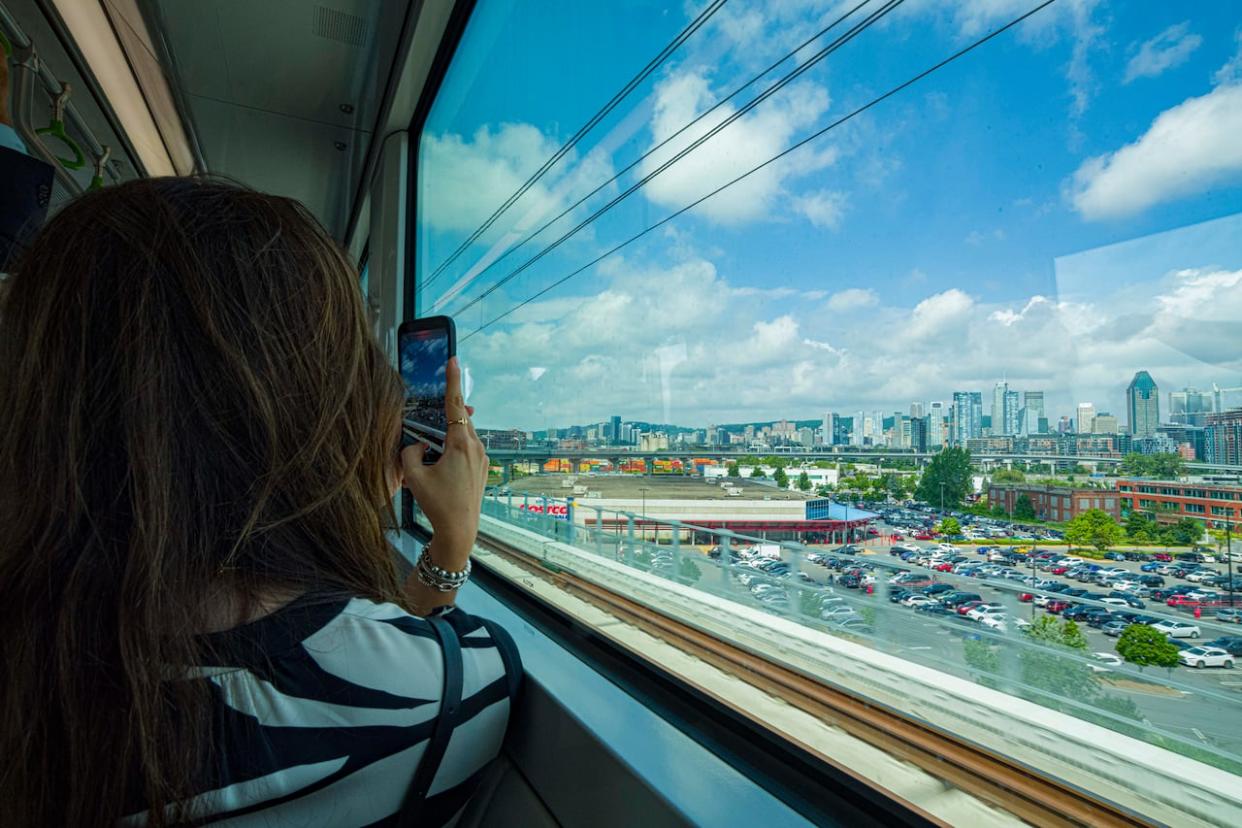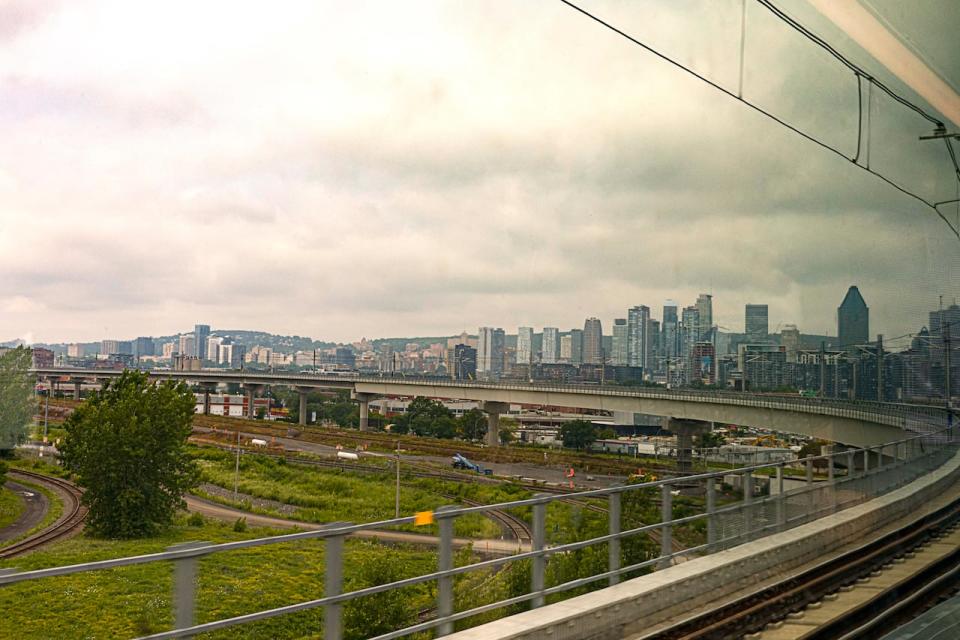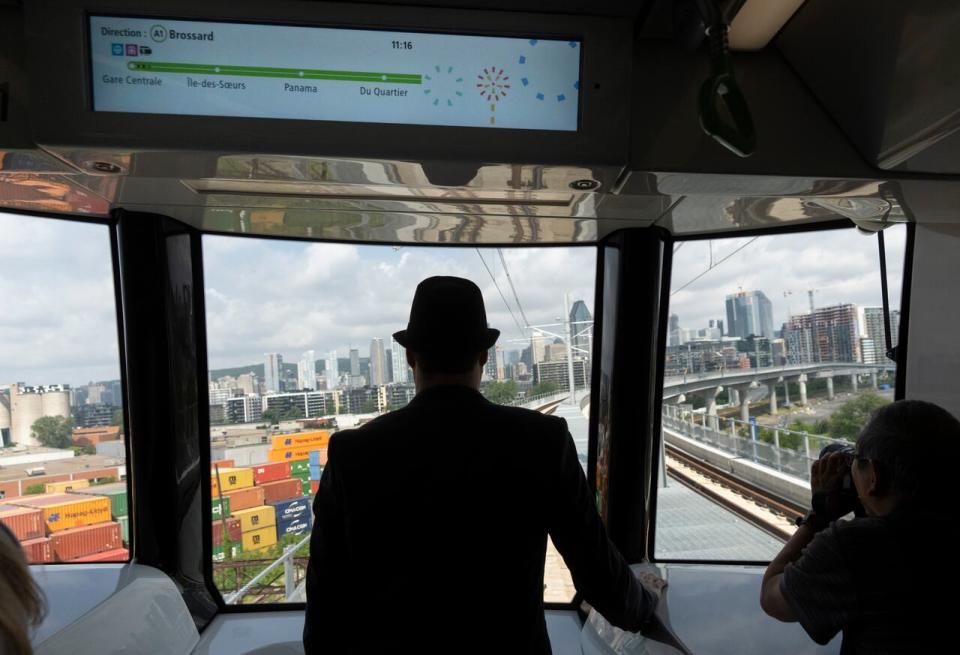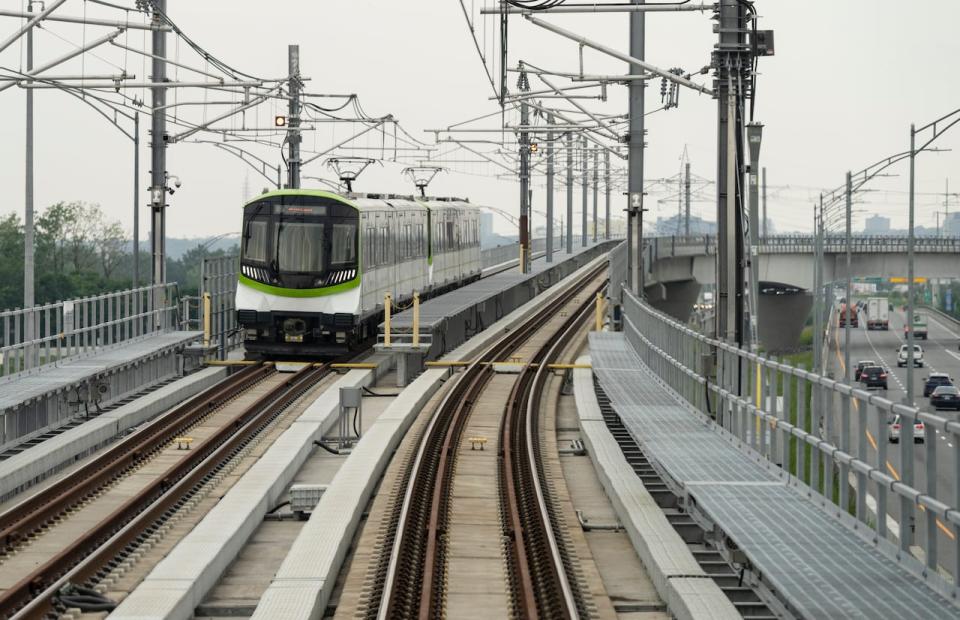How to ride the Montreal-Brossard REM, from how much it costs to when it runs

It's kind of a big deal: the Réseau express métropolitain, or REM, is finally here.
It's the largest public transit project in Quebec in decades and will eventually connect suburbs in the northwest, west and south to downtown Montreal (there is talk of an eastern branch — but the cost and viability for that section seem to have ground that project to a halt).
The first branch of the REM, connecting Brossard, Que., to Montreal's Gare Centrale station, has started running. It carried journalists and officials into the city on Friday and this weekend, rides are being offered for free.
But on Monday, July 31, passengers will have to purchase a fare to board.
Here is everything you need to know to ride the REM:
When is it opening?
The REM's first day of full service is Monday, July 31, 2023, although it is free all weekend long on July 29 and 30.
CDPQ Infra, the agency that built and operates the REM, wanted to get the trains running in the summer when fewer people commute in from the South Shore — the idea being the REM wouldn't be at capacity while any last-minute kinks are ironed out.
What are its hours?
The REM will operate 20 hours a day, seven days a week, between 5 a.m. and 1 a.m.
How often will it run?
During rush hour, trains will arrive every three minutes, forty-five seconds. They will arrive every seven minutes outside rush hour.

The view of Montreal as seen from the REM. (Daniel Thomas/Radio-Canada)
What about the buses that used to cross the Champlain Bridge?
The REM will replace bus lines operated by transit agencies on the South Shore that brought commuters over the Champlain Bridge, depositing them downtown.
Those buses will now bring riders directly to the REM stations, where they will have to transfer onto the trains.
It's a system CDPQ Infra says will be more efficient but which has some South Shore commuters frustrated. They say the REM will actually lengthen their commute and cost them more, especially since some downtown stations — like Griffintown-Bernard-Landry — are not operational yet.
How much will it cost?
Speaking of cost, a REM ticket will cost different prices depending on where you are taking it from.
If you're going between Montreal stations, taking it from the Nun's Island stop to the Gare Centrale station, for instance, you need only purchase a $3.75 "all modes" ticket for Zone A.
But if you're going between the South Shore and the island, you need to get a Zone AB pass, which is more expensive at $4.50.
Monthly passes scale the same way: a monthly Zone A "all modes" pass, which allows users to take every mode of transportation: bus, metro, commuter train and REM on the island of Montreal and on Nun's Island, costs $97.
A Zone AB monthly pass, which allows a rider to use those transportation options in Longueuil, Laval, Brossard and Montreal — costs $155. There are Zones C and D as well, for suburbs that are farther away from Montreal, like Blainville or Rigaud.

A man looks back at the city of Montreal while riding the REM from Gare Centrale to Brossard, following its inaugural run. (Christinne Muschi/The Canadian Press)
How will fares be enforced?
If you have the wrong fare — a Zone A pass, for instance, but you find yourself in Brossard, where you would need a Zone AB pass — you won't have to validate your ticket to leave the train. It will be an honour system, but one that could be enforced by inspectors who, if they catch you with the wrong fare, can issue a fine ranging from $150 to $500.
To buy an individual ticket, you can use ticket machines inside the stations.
They can also issue fines for drinking alcohol ($100 to $500) or smoking or vaping ($250 to $500) onboard the trains.
How do I get to the stations?
However you want. You can cycle, walk or drive to most stations and take the Metro to the Gare Centrale station, which is steps away from the Bonaventure Metro station, located on the Orange line.
But be warned if you choose to drive. Parking is limited at some South Shore stations. The Brossard station on de Rome Boulevard has the most parking spots with 3,000 spaces.

A Réseau express métropolitain (REM) light rail system is seen on the tracks headed toward Gare Centrale in Montreal. (Christinne Muschi/The Canadian Press)
Will it shut down in bad weather?
It could. The REM runs outdoors for much of its length, including a section across the Champlain Bridge. CDPQ Infra said it had to halt testing briefly on July 13 when multiple severe thunderstorms hit Montreal and Environment Canada issued a tornado warning.
What happens if it does shut down?
CDPQ Infra says it has a relief plan in case of the trains aren't running. If there is a shutdown, the ARTM, the regional transit authority for the Montreal area, will help reroute buses to carry people into the city across the Champlain Bridge and stop at the REM stations.

People hold onto the handrails in a REM train during its inaugural run from Brossard to Gare Centrale. (Christinne Muschi/The Canadian Press)
How many people can fit on each train?
Each train has a maximum capacity of 780 people, but if that many people were to crowd onto a train, most of them would be standing. The trains have only 128 seats.
If one were that busy, people could instead wait until the next train, and, before it gets there, they can watch sets of lights above the car entrances to see how full each car is on the next train.
When will the rest of the REM open?
Originally, the southern branch of the REM was scheduled to be up and running in 2021. It's two years behind schedule.
The rest of the REM is similarly behind schedule and there are not yet any hard dates for when other lines and stations will open.
The branches connecting downtown to Deux-Montagnes and the West Island are expected to begin operating sometime in late 2024. The connection to the airport is planned for 2027.
The entire project was initially priced at $6.3 billion, but that number was updated to $6.9 billion in 2021 and could climb even higher when CDPQ Infra provides an updated financial estimate.
Did we miss something? Leave a comment down below and we'll try to find an answer.


